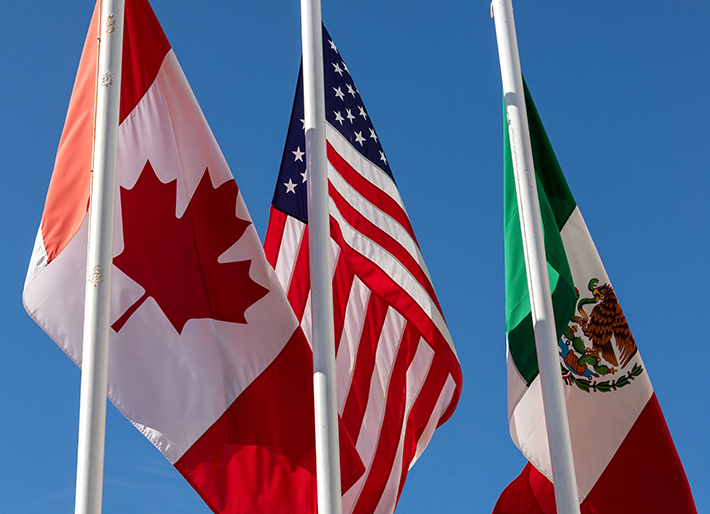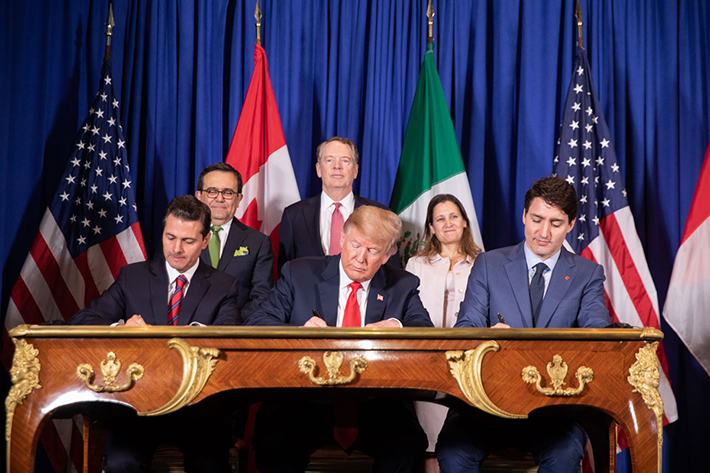What the USMCA Means for SDOs

What the USMCA Means for SDOs
When U.S. President Donald Trump signed the United States-Mexico-Canada Agreement (USMCA) into law on January 29, it marked the beginning of a new era in the economic relationship between North America’s three largest nations by population — and gross domestic product.
The agreement has broad implications for the agricultural, automotive, and manufacturing industries as well as for intellectual property. However, contained within the document’s many chapters on economic policies and practices is the chapter, “Technical Barriers to Trade” (TBT).
The language of this section of the agreement sets forth a second new era — for the world of standards development organizations (SDOs). The language of the previous North American Free Trade Agreement (NAFTA) referenced the 1947 General Agreement on Tariffs and Trade (GATT) and narrowly defined what constitutes an international standards body. Consequently, NAFTA also more narrowly defined which SDOs’ standards could be adopted under the agreement. Specifically, NAFTA stated that “International means a standardizing body whose membership is open to the relevant bodies of at least all the parties to the GATT Agreement on Technical Barriers to Trade.”
READ MORE: The Role of Standards in International Trade
The USMCA recognizes multiple paths to being recognized as an international standards body, leaving the GATT agreement behind and making reference to the World Trade Organization’s TBT Committee. Article 11.4, Section 3 of the USMCA states:
“Each Party shall apply no additional principles or criteria other than those in the TBT Committee Decision on International Standards in order to recognize a standard as an international standard. For greater certainty, criteria that are not relevant to determining whether a standard is an international standard include:
- the domicile of the standards body;
- whether the standards body is nongovernmental or inter-governmental; and
- whether the standards body limits participation to delegations.”
The USMCA further broadens the scope of which SDOs can participate in the development of relevant standards, stating in Section 6 of the same article:
“With respect to any agreement or understanding establishing a customs union or free-trade area or providing trade-related technical assistance, each Party shall encourage the adoption, and use, as the basis for standards, technical regulations, and conformity assessment procedures, of any [11-4] relevant standards, guides, or recommendations developed in accordance with the TBT Committee Decision on International Standards.”
 Outgoing Mexican President Enrique Pe.a Nieto, U.S. President Donald Trump, and Canadian Prime Minister Justin Trudeau (left to right) sign the USMCA during the G20 summit in Buenos Aires, Argentina, on Nov. 30, 2018.
Outgoing Mexican President Enrique Pe.a Nieto, U.S. President Donald Trump, and Canadian Prime Minister Justin Trudeau (left to right) sign the USMCA during the G20 summit in Buenos Aires, Argentina, on Nov. 30, 2018.
The implications of this new language are noteworthy for SDOs, according to Jeff Grove, vice president of global policy, cooperation, and communications at ASTM International, as it opens the agreement up considerably. “NAFTA essentially established a list of international standards bodies,” says Grove. “USMCA refers to the WTO [World Trade Organization] TBT principles and allows individuals, companies, and governments to apply those principles and determine for themselves what is an international standard based on the quality and attributes of the standard, not on the label of who developed it.”
In essence, the USMCA recognizes how much the world has changed in the last 25 years and how much the world of standards has changed as well. “USMCA takes a much more modern view than NAFTA did and eliminates barriers to the acceptance and use of ASTM International standards,” Grove says. “Now the most innovative companies in the world will be able to use the standards that they prefer based on attributes such as technical quality, market relevance, and suitability to the task at hand.”
Going forward, ASTM International, like many other SDOs, is excited to embark on this new era in the world of standards. The chance to help foster innovation and support economic growth in North America is a great opportunity. “ASTM is excited to help make a more seamless marketplace for North America,” says Grove.
But, he adds, the implications of the USMCA are even broader than that. For at its heart, this is a global agreement, and Grove hopes it will engage more stakeholders with ASTM’s standards development process. “This isn’t just a one-way agreement,” he says. “We do hope to see more experts from Mexico, Canada, from industry, from government, all become more engaged in ASTM International as a result of USMCA.”